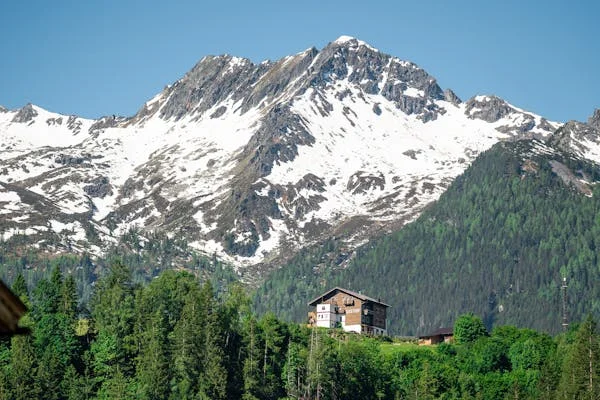Introduction
Mountain valleys nyt have long captured human fascination due to their breathtaking landscapes, ecological importance, and cultural significance. These valleys, nestled between towering peaks, offer shelter, water sources, and diverse wildlife. Publications like The New York Times (NYT) often highlight the beauty and significance of these valleys, showcasing their role in history, tourism, and environmental conservation.
In this detailed article, we will explore the formation, types, ecological importance, human interactions, and challenges facing mountain valleys. This comprehensive guide provides an in-depth look at mountain valleys NYT and their role in our world.
1. Formation of Mountain Valleys
Mountain valleys are created through geological processes that shape the Earth’s surface over thousands or even millions of years. These processes include:
River Erosion
- Flowing rivers cut through rock layers, gradually forming valleys.
- The process results in narrow, deep, and V-shaped valleys.
- Example: The Colorado River carving the Grand Canyon.
Glacial Activity
- Massive glaciers erode the land, creating wide, U-shaped valleys.
- These valleys often feature steep walls and flat floors.
- Example: Yosemite Valley in California.
Tectonic Movements
- Shifting of the Earth’s crust can create rift valleys between mountains.
- These valleys are often deep and extensive.
- Example: The Great Rift Valley in Africa.
Volcanic Activity
- Lava flows and volcanic eruptions can alter landscapes, leading to valley formation.
- These valleys may contain fertile soil due to volcanic ash deposits.
- Example: Valleys near Mount St. Helens in the U.S.
2. Types of Mountain Valleys
Mountain valleys vary based on their formation and characteristics. The main types include:
| Valley Type | Formation | Characteristics | Example |
| V-Shaped Valley | River erosion | Narrow and deep with steep sides | Grand Canyon, USA |
| U-Shaped Valley | Glacial erosion | Wide, with flat floors and steep walls | Yosemite Valley, USA |
| Hanging Valley | Smaller glacial valley joining a larger one | Often features waterfalls | Bridalveil Falls, USA |
| Rift Valley | Tectonic shifts | Deep, long depressions | Great Rift Valley, Africa |
3. Ecological Importance of Mountain Valleys
Mountain valleys play a crucial role in maintaining biodiversity and sustaining ecosystems. Their unique geography supports a variety of plant and animal life.
Biodiversity Hotspots
- Many rare species thrive in mountain valleys due to the distinct microclimates.
- Example: The Himalayas host the endangered snow leopard.
Freshwater Sources
- Valleys contain rivers, lakes, and streams essential for wildlife and human consumption.
- Example: The Indus River in Pakistan supports millions of people.
Climate Regulation
- Valleys influence local climates by trapping moisture and regulating temperatures.
- This helps in agricultural productivity and ecosystem balance.
Soil Fertility
- Glacial and river valleys often contain nutrient-rich soil, promoting plant growth.
- Example: The Nile Valley supports extensive farming due to its fertile land.
4. Human Settlements and Cultural Significance
Many civilizations have thrived in mountain valleys due to their natural resources and protective terrain.
Agriculture
- Valleys provide ideal conditions for farming, with fertile soil and ample water.
- Example: The Andes Mountains’ terraced farming sustains local communities.
Tourism and Recreation
- Mountain valleys attract travelers for activities like hiking, skiing, and wildlife observation.
- Example: The Swiss Alps welcome millions of visitors annually.
Spiritual and Cultural Importance
- Some valleys hold religious or historical significance.
- Example: The Ganges River Valley is sacred to Hindus.
5. Challenges Facing Mountain Valleys
Despite their importance, mountain valleys face various environmental and human-induced threats.
Climate Change
- Rising temperatures lead to glacial melting, altering valley ecosystems.
- Example: The Alps experience shrinking glaciers, affecting tourism and water supply.
Deforestation
- Illegal logging and land clearing disrupt ecosystems and increase erosion risks.
- Example: The Amazon’s deforestation threatens native wildlife.
Pollution
- Industrial activities and tourism contribute to pollution in valley rivers and air.
- Example: Plastic waste in Everest Base Camp valleys.
Natural Disasters
- Mountain valleys are prone to landslides, floods, and earthquakes.
- Example: The 2015 Nepal earthquake caused severe damage in Himalayan valleys.
Urbanization
- Expanding cities and road construction lead to habitat destruction.
- Example: The Himalayas see rapid infrastructure development, affecting biodiversity.
6. Conservation Efforts and Sustainable Practices
Protecting mountain valleys requires global and local conservation efforts.
Reforestation and Habitat Restoration
- Planting trees prevents soil erosion and restores wildlife habitats.
- Example: The European Alps’ afforestation programs help combat climate change.
Sustainable Tourism
- Eco-friendly travel practices minimize environmental impact.
- Example: Bhutan implements strict tourism regulations to preserve its valleys.
Climate Adaptation Strategies
- Governments must develop policies to reduce carbon emissions affecting mountain climates.
- Example: Renewable energy projects in Swiss mountain villages promote sustainability.
Wildlife Protection Initiatives
- Establishing national parks ensures the survival of endangered species.
- Example: Banff National Park in Canada protects mountain valley ecosystems.
7. Famous Mountain Valleys Highlighted by The New York Times
The New York Times frequently covers stories about some of the world’s most beautiful and ecologically significant mountain valleys nyt.
Yosemite Valley, USA
- Recognized for its granite cliffs, waterfalls, and old-growth forests.
- NYT features articles on conservation efforts and tourism impacts.
The Great Rift Valley, Africa
- Known for its deep geological formations and rich biodiversity.
- The NYT covers its role in human evolution and wildlife conservation.
Hunza Valley, Pakistan
- Famous for stunning landscapes and traditional culture.
- NYT reports discuss its history and growing tourism industry.
Lauterbrunnen Valley, Switzerland
- Features picturesque alpine scenery with waterfalls and charming villages.
- The NYT highlights Switzerland’s sustainability efforts in tourism.
8. Future of Mountain Valleys
The future of mountain valleys nyt depends on global conservation efforts and sustainable development. Key areas of focus include:
Strengthening Environmental Laws
- Governments must enforce strict policies to protect mountain ecosystems.
Encouraging Green Agriculture
- Farmers should adopt eco-friendly techniques to prevent soil degradation.
Enhancing Climate Resilience
- Local communities need support to adapt to changing weather patterns.
Promoting Responsible Travel
- Educating visitors on minimizing their environmental footprint is crucial.
9. Conclusion
Mountain valleys nyt , as featured in The New York Times, are some of the most important ecosystems on Earth. They offer natural beauty, support biodiversity, provide freshwater, and sustain human settlements. However, they face increasing threats from climate change, pollution, and urbanization.
By embracing conservation initiatives, sustainable tourism, and environmental protection policies, we can ensure that these valleys remain intact for future generations. Whether through exploring, preserving, or learning about these landscapes, everyone has a role in protecting mountain valleys NYT continues to showcase as vital natural wonders.







